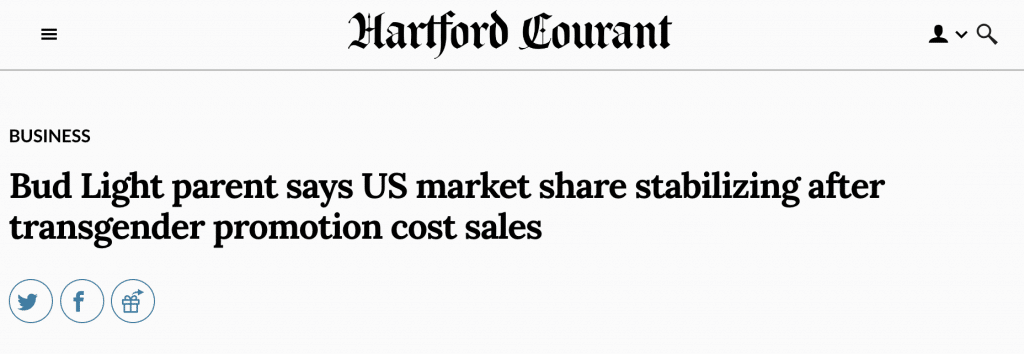Although the origin of the saying “sticks and stones may break my bones, but words shall never hurt me” had good intentions, it’s lesson is a harmful one to teach children.
The truth is, words can be just as painful – if not more – than physical pain, and if society truly acknowledged and believed this, harmful language wouldn’t be as prevalent as it is today. And the thing is, it’s often it’s the subtle language that goes undetected and can cause so much harm because it reinforces biases without anyone calling us out on it.
Take for example, this article’s headline, which reads, “Bud Light parent says US market share stabilizing after transgender promotion cost sales“

To be accurate, “transgender promotion” in and of itself didn’t cost Bud Light sales. The loud minority and the cowardly back-peddling from the brand cost them sales.
Subtly biased headlines like this reinforce harmful biases within many of us. And when we consider the cascading effect communication has, this can’t just be overlooked as a trivial incident – inclusive communications and language needs to be prioritized.
Another reason why we can’t overlook inclusive communications and language is showcased in this story, where Indigenous women in Canada have been forcibly sterilized for decades. In this case, misinterpretation of nonverbal communication – among many other things – has contributed to this disaster. In and of itself, it’s a subtle communication misunderstanding, but paired with power, privilege, and colonial structures, it’s developed into a tragedy.
Gerri Sharpe, president of Pauktuutit Inuit Women of Canada provides more context; “Health centers serving Inuit women often aren’t staffed by Indigenous people, resulting in translation problems. For example, in Inuit culture, people often communicate with facial expressions, like raising their eyebrows for “yes” or wrinkling their nose for “no.” “Doctors will be speaking, and they look to the woman to acknowledge something. When she (raises her eyebrows), the doctor labels it as ‘non-responsive’”
Often, we look for overtly un-inclusive language and communications to call out. However, because – as a society – we aren’t trained to look out for it, the subtle instances that lurk beneath the surface going undetected, and reinforcing biases, are the ones often causing irreparable harm.
Thus, as a society, we need to build up our intercultural competency and start to detect and call out any instances if we have any chance of fostering belonging for equity-deserving groups for future generations.
You can start building on your own intercultural competency by reading LaRay M. Barna’s “Stumbling Blocks in Intercultural Communication”, which is directly related to the communication issue examples above.









